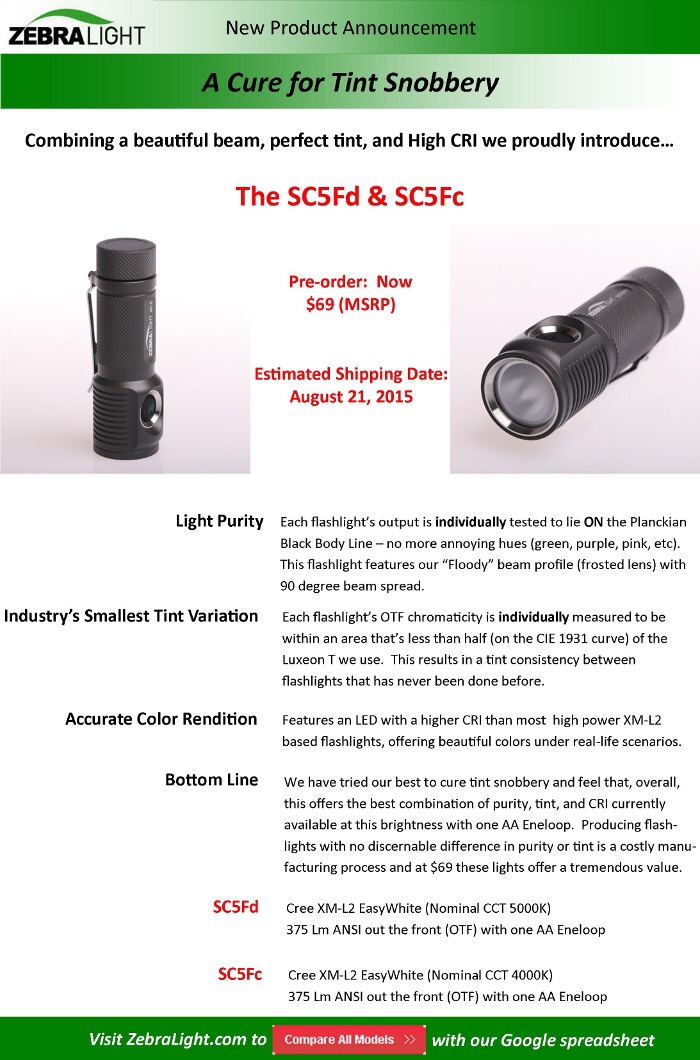I've been agonizing over the various new Easywhite Zebralights that are out. I love the ZL UI for it's inclusion of numerous sub-lumen and low lumen modes. Quite frankly, I rarely use any of my lights high modes at all. I use one of the moonlight sub-modes most often in my flashlights.
It has me thinking, is there a better tint for use at these low levels? Specifically, I'm looking at the ZL SC5Fc or Fd variants.
Do all LED's cool as they're driven at lesser voltages for sub-lumen levels? If so, that would push me toward the 4000k "c" variation. Otherwise, I'd be interested in the "d" flavour since I'm hoping it would be the closest to the Nichia 219's wonderful neutral white tint.
Primary use would be indoors. If it was for an outdoor light, I usually prefer the warmer temps to bring out browns and reds.
Thoughts?
It has me thinking, is there a better tint for use at these low levels? Specifically, I'm looking at the ZL SC5Fc or Fd variants.
Do all LED's cool as they're driven at lesser voltages for sub-lumen levels? If so, that would push me toward the 4000k "c" variation. Otherwise, I'd be interested in the "d" flavour since I'm hoping it would be the closest to the Nichia 219's wonderful neutral white tint.
Primary use would be indoors. If it was for an outdoor light, I usually prefer the warmer temps to bring out browns and reds.
Thoughts?


